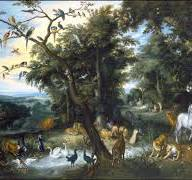"LOVE DIVINE, ALL LOVES EXCELLING": AN EXPOSITION OF CHARLES WESLEY'S HYMN-Part the Second
- Dr. Roger D Duke

- Jun 4, 2021
- 4 min read

"LOVE DIVINE ALL LOVES EXCELLING"
PART THE SECOND
From our newly released book AMAZING LOVE! HOW CAN IT BE: STUDIES ON HYMNS
BY CHARLES WESLEY
Available from
By Roger D. Duke and Chris Fenner
Stanza 2
Breathe, O breathe thy loving Spirit
Into every troubled breast;
Let us all in Thee inherit,
Let us find that second rest;
Take away our power of sinning,
Alpha and Omega be,
End of faith as its beginning,
Set our hearts at liberty.
The attitude of prayer continues here, asking that “certain longed-for results shall follow the indwelling Spirit of love: trouble relieved, rest secured, the desire to sin removed, release from the bondage of sin.”[1] The Spirit will perform dynamics for and in the believer. The Spirit’s breathing on the believer references Christ, when he “breathed on them and said unto them, receive ye the Holy Ghost” (John 20:22). The stanza ends with “Alpha and Omega be” (Rev. 22:13) and “End of faith as its beginning” (Heb. 12:2), biblical allusions to the finished work of Christ. But the Holy Spirit’s “office work” in the believer is Wesley’s main emphasis in this second stanza.
The fourth and fifth lines, regarding the “second rest” and the “power of sinning,” require special consideration. These lines have been the most controversial, even in the brothers’ lifetimes, and even between the brothers. They draw from the Wesleys’ beliefs about Christian perfection (sanctification), based to some degree on the works of William Law (1686–1761)[2] and on passages such as Matthew 5:48, “Be ye therefore perfect, even as your Father which is in heaven is perfect” (KJV). In his journal for September 26, 1740, Charles offered this description of Christian perfection: “utter dominion over sin; constant peace, and love, and joy in the Holy Ghost; the full assurance of faith, righteousness, and true holiness.”[3] For Charles, the attainment of perfection should be marked by humility and complete dependence on Christ. In 1741, he wrote a hymn called “The Promise of Sanctification,”published together with John’s sermon “Christian Perfection,”[4] in which Charles described an inverse relationship:
Now let me gain perfection’s height!
Now let me into nothing fall!
Be less than nothing in thy sight,
And feel that Christ is all in all.
Over time, the disagreement between the brothers became a matter of whether and how Christian perfection could be attained on this side of heaven. The issue came to a head around 1760, when several people in their circle of influence claimed to have been completely delivered from sin. Whereas John was inclined to believe these testimonies, Charles was not. Charles had come to believe complete sanctification only happened on the other side of death. The difference between the two was expressed by John in a letter to Charles, July 9, 1764: “That perfection which I believe, I can boldly preach, because I think I see five hundred witnesses of it. Of that perfection which you preach, you do not even see any witnesses at all.”[5]
This distinction also played out in the printing of this hymn. In 1761, when tension between the brothers was high, they each produced their own hymnals. John compiled Select Hymns with Tunes Annext, in which “Love divine” was printed in full, unchanged from 1747. Charles compiled Hymns for Those to Whom Christ is All in All, in which “Love divine” was reduced to three stanzas, minus this second stanza about Christian perfection. Notice also the connection between the title and Charles’ earlier hymn. As Wesley editor Randy Maddox put it, “Charles’s concern about the perfectionist controversy is likely what led him to publish [the 1761 volume]. . . . He considered verbal claims to perfection to be vain boasting, maintaining that the truly perfect would testify only of their dependence upon Christ.”[6]
[1] Bailey, The Gospel in Hymns, 96.
[2] William Law, A Practical Treatise upon Christian Perfection (London, 1726).
[3] S.T. Kimbrough, Jr. & Kenneth G.C. Newport, The Manuscript Journal of the Reverend Charles Wesley, M.A., vol. 1 (Nashville, Kingswood Books, 2008), p. 279. [4] John Wesley, Christian Perfection: A Sermon (London: Strahan, 1741).
[5] John R. Tyson, Charles Wesley: A Reader (Oxford: University Press, 1989), p. 384.
[6] Randy L. Maddox, ed. All in All (1761), Charles Wesley’s Published Verse, https://divinity.duke.edu/initiatives/cswt/charles-published-verse. For more background on the perfection issue, see also Tyson, Assist Me to Proclaim, pp. 230-251; Hildebrandt & Beckerlegge, Works of John Wesley, vol. 7, pp. 16-19, 545-574; S.T. Kimbrough, The Lyrical Theology of Charles Wesley, Expanded Ed. (Eugene: Cascade Books, 2013), pp. 88-91, frames this discussion around the term theosis; and John Lawson, A Thousand Tongues: The Wesley Hymns as a Guide to Scriptural Teaching (London: Paternoster, 2007), pp. 193-195. Lawson saw the phrase “Take away our power of sinning” as a reference to St. Augustine, De civitate Dei, xxii:30, “The first immortality, which Adam lost by sinning, was the ability not to die (posse non mori), the new immortality will be the inability to die (non posse mori). In the same way, the first freedom of choice conveyed the ability not to sin (posse non peccare); the new freedom will confer the inability to sin (non posse peccare).”




Comments